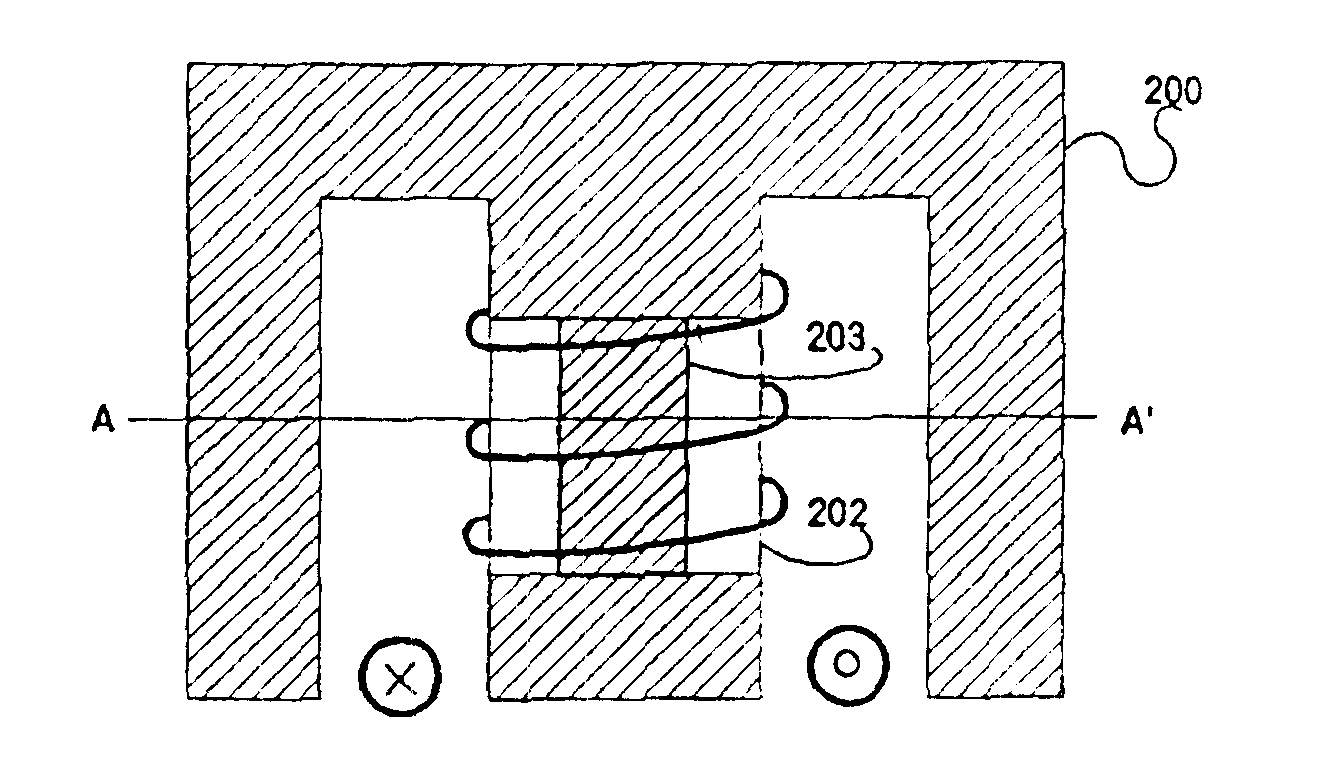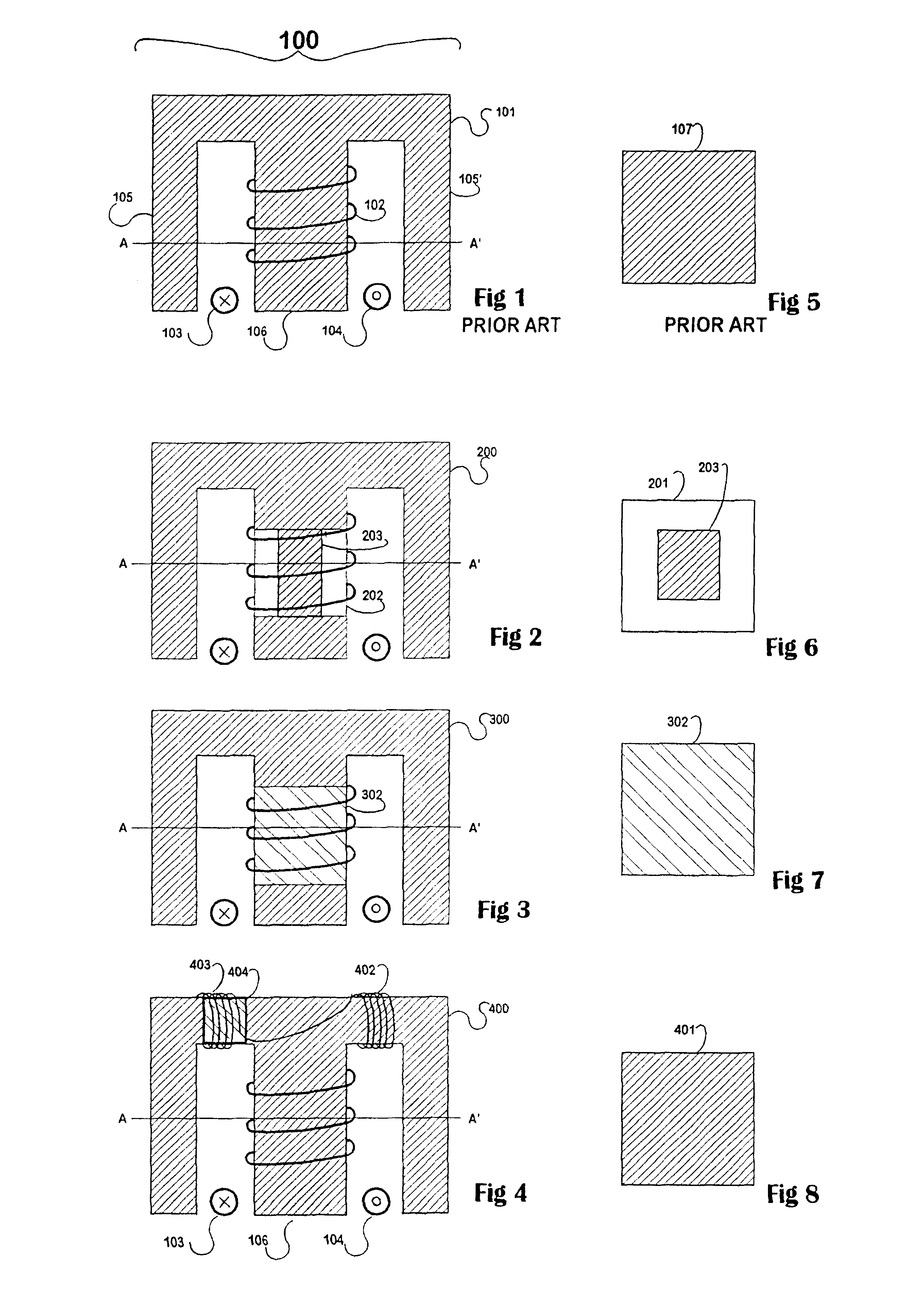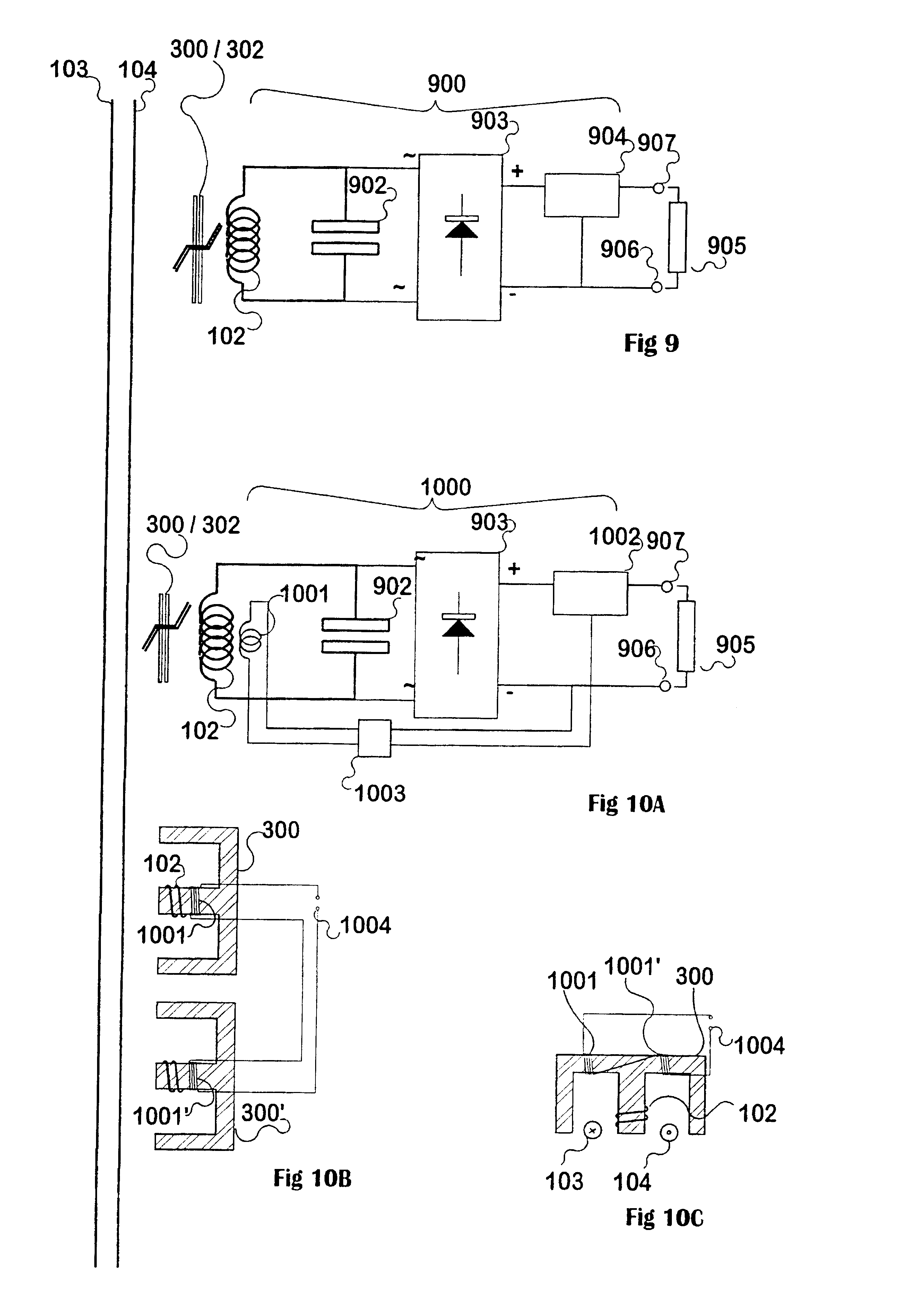Control of inductive power transfer pickups
a technology of inductive power transfer and control feature, which is applied in the direction of inductance, rail devices, ac networks with different sources at the same frequency, etc., can solve the problems of imposing a risk, catastrophic breakdown, and development of fire within the pickup device, so as to reduce the saturation capacity, reduce the risk, and ensure the control feature reliable
- Summary
- Abstract
- Description
- Claims
- Application Information
AI Technical Summary
Benefits of technology
Problems solved by technology
Method used
Image
Examples
example 1
In a device using inductive power transfer for battery charging purposes the saturated-core pickup design has been designed so that the rectifier diodes are effectively protected from a voltage surge which will otherwise occur at any time that a shorting controller enters the "open" state, or at the initial connection of power. Because a constant-current supply exists, the immediate injection of full power results in a voltage surge because consumption rises more slowly. The rate of rise of current flow from the rectifier to the battery is limited by a series inductance.
The design process in respect of saturation comprises the provision of a core which will saturate, when at a low end of an operating temperature range, before the output voltage exceeds the peak inverse voltage rating of the rectifier diodes used. (The "low temperature" is specified only because the flux density at saturation reduces with increasing temperature). This application uses a bridge comprised of Schottky d...
PUM
 Login to View More
Login to View More Abstract
Description
Claims
Application Information
 Login to View More
Login to View More - R&D
- Intellectual Property
- Life Sciences
- Materials
- Tech Scout
- Unparalleled Data Quality
- Higher Quality Content
- 60% Fewer Hallucinations
Browse by: Latest US Patents, China's latest patents, Technical Efficacy Thesaurus, Application Domain, Technology Topic, Popular Technical Reports.
© 2025 PatSnap. All rights reserved.Legal|Privacy policy|Modern Slavery Act Transparency Statement|Sitemap|About US| Contact US: help@patsnap.com



